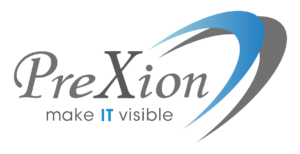
A recent PreXion survey of about 200 general dentists and specialists revealed that diagnosing is a particularly challenging area of practice management, with 26% saying it was “extremely challenging,” another 48% calling it “very challenging” and yet another 22% pinpointing it as “somewhat challenging.” In fact, only 5% of respondents thought diagnosing was not a challenge.
Here are three tips to improve diagnoses and thereby patient care and outcomes:
#1 Right Tools
The National Institutes of Health (NIC) states in the article Methods used by Dental Practice-Based Research Network (DPBRN) dentists to diagnose dental caries, “the dental explorer was the instrument most commonly used to detect primary occlusal caries as well as to detect caries at the margins of existing restorations… [and for] proximal caries, radiographs were used to help diagnose 75-100% of lesions by 96% of the DPBRN dentists.”
Indeed, time-tested tools can go a long way in accurate diagnoses. And by considering expanding diagnostic tools available to your team and patients, care is further improved.
First, if you haven’t already made the move from standard radiographs to digital X-rays, know that the latter are known to produce clearer images, cost less, take less time and be easier to store.
Second, CAD/CAM dentistry is known for lowering costs, improving accuracy, decreasing wait time as well as producing more accurate and stronger restorations.
Finally, 3D imaging produces a very high return on investment, boasts fast data reconstruction time, offers the clearest diagnostic imaging available today, has the smallest focal spot (X-ray beam source) as low as 0.3mm and is known to encourage higher patient treatment plan acceptance.
#2 Right Conversations
Patients today can be great advocates for their dental health. Asking the right questions to get the patient talking about their oral health can support in efficient and effective diagnoses.
Of course, basic questions for the patient may include:
- How many times a day do you brush?
- What toothpaste brand do you use?
- How often do you floss?
- What do you use to floss (pick, floss, etc.)?
- How many sugary treats would you say you have daily?
- How would you describe your breath?
More advanced care questions for the patient may include:
- Do you have any concerns about your smile?
- How satisfied are you with the color of your teeth?
- Do you have pain that interferes with sleep, work or daily life?
- Do you have pain that gets worse or better with hot or cold foods or drinks?
Keeping the conversation going checkup after checkup can strengthen the patient-doctor relationship and promote higher treatment acceptance rates.
#3 Right Model
Train the entire dental team on one set model for diagnostic reasoning. Here are a few highlights from a model for clinical reasoning published by McGraw Hill Medical:
- Identify the problem
- Frame the differential diagnosis to facilitate recall
- Organize the differential diagnosis into subgroups
- Create a patient-specific differential
- Further explore the patient-specific differential by overlaying history and exam outcomes
The McGraw Hill Medical model continues from there. Whether this model or another, pick one and stick with it for consistent diagnosis and patient outcomes.
